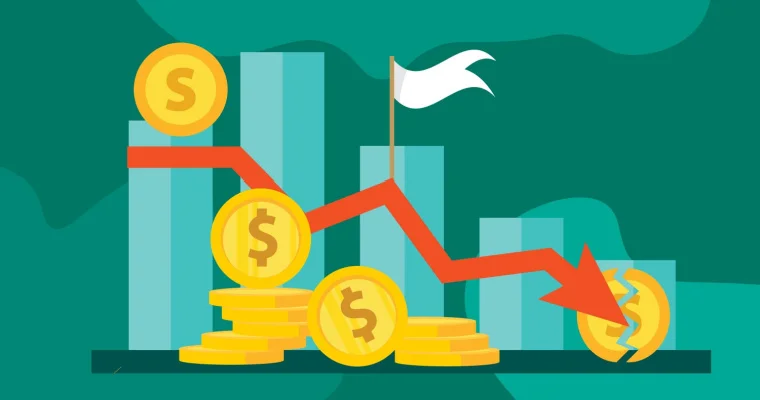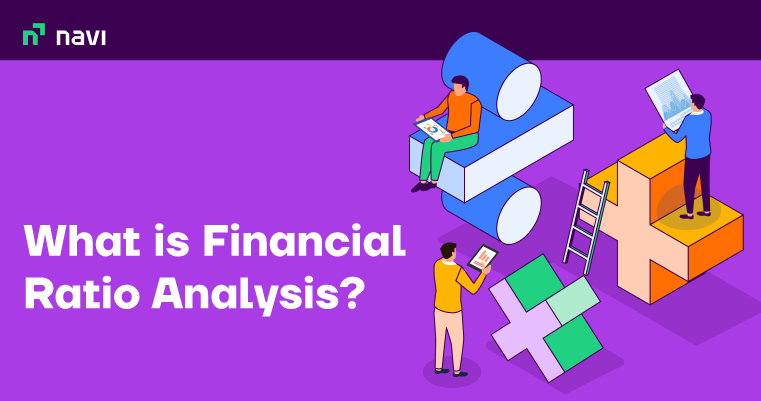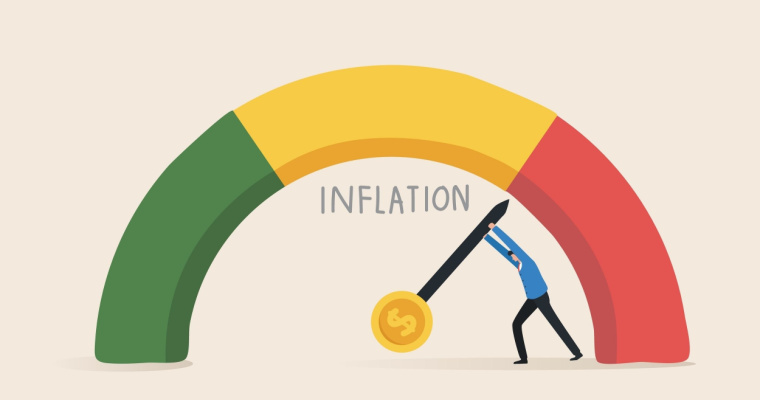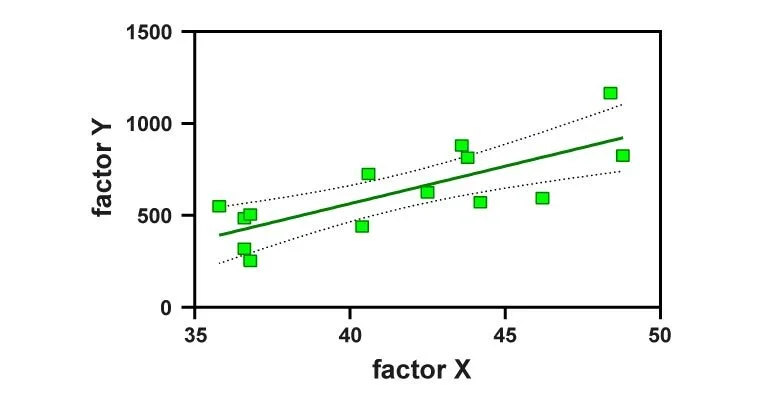Emergency Credit Line Guarantee Scheme (ECLGS): All About This MSME Scheme

The Union Budget 2022-23 came with another amendment in the ECLGS scheme that the Finance Ministry has extended its validity and limit. ECLGS full form is Emergency Credit Line Guarantee Scheme. To overcome the economic distress due to the CoronaVirus outbreak, the Indian Finance Ministry announced the Emergency Credit Line Guarantee Scheme (ECLGS) in May 2020. The scheme unveiled Rs. 20 Lakh Crore comprehensive package to provide credit, especially to Micro, Small, and Medium Enterprises (MSMEs), to mitigate the crisis arising from the CoronaVirus pandemic and the nationwide lockdown. The self-reliant India campaign was launched as a part of the package for those most affected due to the nationwide lockdown and aid in compensating liabilities, getting capital needs, and restarting businesses.
The ECLGS scheme significantly impacted credit flow in the MSME sector. Incremental credit in 2020 was much higher than in the pre-pandemic times, supported by the Atmanirbhar Bharat scheme – ECLGS scheme. A report shows that the financial system disbursed loans worth Rs 9.5 trillion to the MSME sector in FY 21-22, a significant rise over preceding years. This article explores the details about ECLGS 1.0, ECLGS 2.0, ECLGS 3.0, ECLGS 4.0, segments to be aided, its duration, and other elements.
What is the Emergency Credit Line Guarantee Scheme (ECLGS)?
Emergency Credit Line Guarantee Scheme (ECLGS) provides full guarantee coverage to banks and financial institutions for additional working capital loans and NBFCs for additional term loans. The project is managed by the NCGTC (National Credit Guarantee Trustee Company Ltd).
Purpose of Emergency Credit Line Guarantee Scheme (ECLGS)
Under the Government’s Atmanirbhar Bharat package, the scheme aims to aid businesses and MSMEs in meeting their working capital and other operational costs via collateral-free and fully-guaranteed credit to mitigate the adverse impact of the COVID-19 crisis.
Also Read: Emergency Loans In India: How To Apply For Urgent Loans
Objectives of Emergency Credit Line Guarantee Scheme (ECLGS)
The scheme started by the Ministry aims to provide a complete guarantee to banks and NBFCs loans so that they can extend emergency or additional credit facilities to businesses, mainly to MSMEs and individuals. They have availed of business loans to meet operational liabilities or working capital requirements to resume their businesses during this COVID era.
Key Points of Emergency Credit Line Guarantee Scheme (ECLGS)Facility Type
1. Facility Type
It is a credit facility provided under the scheme as an add-on term loan to business entities / MSME / individuals meeting eligibility criteria. It is a different account from the existing loan account. Under the scheme, these loans are called ‘Guaranteed Emergency Credit Line (GECL)’. A new loan account is opened for additional credit.
2. Credit Limit under ECLGS Scheme
The ministry announced the ECLGS 0.1 as a part of the Covid relief package offering Rs 20 lakh crore to businesses, valid till November 2020. ECLGS 0.4 comes with up to Rs. 2 crores to existing clinics/hospitals/medical colleges involved in manufacturing oxygen, oxygen cylinders etc.
3. Tenure
The maximum tenure is 54 months (after an initial moratorium of 6 months) from the disbursement. This period of guarantee cover is co-terminus with the loan tenor. The total maximum tenor for ECLGS 4.0 is five years.
4. Repayment
The moratorium period for ECLGS 1.0, 2.0, and 3.0 was two years and six months for ECLGS 4.0.
5. Security
The lender will not ask for additional collateral for additional funding under the Emergency Credit Line Guarantee Scheme (ECLGS).
6. Validity
The scheme will apply to all loans specified as credit products under the GECL from May 23, 2020, to March 31, 2023. If the NCGTC guarantees emergency credit lines for granted amounts under the scheme before March 31, 2023, the scheme will not be valid after that date.
7. NCGTC Guarantees
The National Credit Guarantee Trustee Corporation (NCGTC) 100% guarantees the credit line under the scheme GECL to Member Lending Institutions (MLI). It guarantees an additional working capital loan facility for financial institutions availed by eligible business entities and interested PMMY borrowers.
ECLGS Interest Rate
Here are the interest rates charged under ECLGS:
- For banks and financial institutions, a maximum of 9.25% p.a. under ECLGS 1.0, ECLGS 2.0, ECLGS 3.0.
- For NBFCs, a maximum of 14% p.a. under ECLGS 1.0, ECLGS 2.0, ECLGS 3.0.
- Under ECLGS 4.0, a maximum of 7.5% p.a.
Expansion – ECLGS 1.0, ECLGS 2.0, ECLGS 3.0, ECLGS 4.0
The Emergency Credit Line Guarantee Scheme (ECLGS) was launched to provide businesses, MUDRA borrowers, and individual business loans guarantee and additional credit for up to 20% of their debt outstanding as of February 29, 2020. MSMEs with a maximum of Rs. 25 crores outstanding were eligible.
During COVID-19, the scheme has been expanded to cover 27 financially distressed sectors. As defined by the Kamath Committee, these are the ones with loans between Rs. 50 crore and Rs. 500 crore. These sectors could not generate sufficient revenues to meet their financial obligations due to the pandemic.
To aid and help these sectors, the amount of funding allowed to eligible borrowers is up to 40% of their total debt outstanding as of February 29, 2020. The repayment window was also revised to five years from four years for ECLGS 1.0.
ECLGS 3.0 covered businesses in the Hospitality, Travel & Tourism, Leisure, and Sporting sectors, extended with a sanction of Rs. 3-lakh-crore. These ECLGS loans’ tenure was increased to 6 years.
In the ELCGS 4.0 extension, the scheme validity has been increased to March 2023. Its guarantee cover has also been raised by Rs 5 lakh crore from Rs 50,000 crore.
Eligibility for Emergency Credit Line Guarantee Scheme (ECLGS)
It provides guaranteed and collateral-free additional credit to established businesses, MUDRA borrowers, and individual business loans. As per the ECLGS scheme eligibility, the borrowers could get up to 20% of their debt outstanding as of February 29, 2020. MSMEs with a maximum of Rs.25 crore outstanding were eligible. A cap of Rs.100 crore in turnover was withdrawn post amendment in the form of ECLGS 2.0.
In a later update to ECLGS 2.0, business entities in those 27 financially stressed sectors were given more benefits. Establishments with outstanding debt between Rs 50 – 500 crore, lower or equal to 60 days past due as of February 29, 2020, are eligible for additional credit. Such entities will also benefit from not being categorized as SMA 2 or declared NPA by a lending institution.
Entities who got credit under ECLGS 1.0 or new business entities meeting eligibility criteria under ECLGS 1.0 as per the redrafted operational terms as of March 31, 2021, are also eligible for these benefits.
A business entity /MSME in the Hospitality, Tourism, Leisure, Sporting, and Aviation sector became eligible under ECLGS 3.0 based on the redrafted term as of March 31, 2021.
Under the present ECLGS 4.0, an existing clinic/hospital/nursing home/medical college with a credit facility from a lender with a maximum of 90 days past due as of March 31, 2021, can get the credit of up to Rs 2 crore for on-site oxygen and related products manufacturing.
Also Read: A Comprehensive Guide To Building Emergency Funds In 2022
NCGTC Guidelines – Synopsis for ECLGS 4.0
The revised ECLGS scheme guidelines have been enforced from the date of issue – March 30, 2022, by NCGTC.
- 100% guarantee covers loans up to Rs. 2 crores to clinics/hospitals/nursing homes/medical colleges involved in oxygen generation or related products, like cylinders.
- ECLGS 4.0 withdraws the upper ceiling limit of Rs 500 crore given in ECLGS 3.0.
- The additional ECLGS assistance is restricted to 40% or Rs 200 crore, which comes at a lower place.
- The lending rate on GECL for banks and financial institutions can be a maximum of 9.25% per annum and for NBFCs maximum of 14% per annum.
- The lending rate under ECLGS 4.0 for loans up to Rs.2 crore can be 7.5% per annum.
Final Word
The Emergency Credit Line Guarantee Scheme (ECLGS) 4.0 seeks to continue providing additional financial assistance to the MSME and other eligible entities. Many MSMEs and business entities are eligible under the revised NCGTC guidelines that smooth the flow of institutional credit at affordable rates and drive the restart of regular business activity faster. ECLGS website is dedicated to detailed operational terms helping the borrowers to confirm their eligibility. The scheme claims to have saved over 15 million jobs to date. Also, it has been beneficial for the lending sector, rescuing 14% of outstanding MSME loans from becoming non-performing assets (NPAs).
FAQs
Ans. The GECL is a loan for which the NCGTC (National Credit Guarantee Trustee Company) grants a full guarantee to Member Lending Institutions (MLIs). The loan is extended as an additional credit for working capital and non-fund-based facility in the case of Scheduled Banks and Financial Institutions. It is extended as an add-on term loan in the case of NBFCs. Business entities and MSMEs, individual borrowers, and borrowers interested in Pradhan Mantri Mudra Yojana can extend their loans taken for business requirements.
Ans. All Scheduled Commercial Banks in operation are eligible for the scheme. NBFCs established before at least two years from February 29, 2020, are eligible under the scheme. Financial institutions are also eligible as MLls under the scheme, including All India Financial Institutions as specified under subclause (i) of clause (c) of Section 45-l of the RBI Act.
Ans. Yes, loans under PMMY extended on or before March 31, 2021, notified on the MUDRA portal, are enwrapped under the ECLGS scheme.
Ans. It is a pre-approved loan. The MLI sends the offer to their borrowers meeting scheme eligibility criteria. The borrower may accept it or not. If the business accepts the offer, it can complete the requisite documentation.
Ans. No prepayment penalty is applicable in case of early repayment. There are no additional costs also to facilitate business with easy processing.
Before you go…
- Looking for instant ? personal loans 24*7 anywhere, anytime? Install the Navi app now!
- Or, maybe you’re looking to buy that house you’ve been eyeing ? and
you need a loan of up to Rs.10 crore. Install the Navi app now and get instant in-principle approval right away! Interest rates starting at 6.95% p.a. - How about an affordable health insurance policy ?⚕️ starting at a monthly premium of just Rs. 241? Install the Navi app now and get your policy in under 2 minutes.
- Instead, want to put your savings into action and kick-start your investment journey ? But don’t have time to do research. Invest now with Navi Nifty 50 Index Fund, sit back, and earn from the top 50 companies.
Disclaimer: This article has been prepared on the basis of internal data, publicly available information and other sources believed to be reliable. The information contained in this article is for general purposes only and not a complete disclosure of every material fact. It should not be construed as investment advice to any party. The article does not warrant the completeness or accuracy of the information, and disclaims all liabilities, losses and damages arising out of the use of this information. Readers shall be fully liable/responsible for any decision taken on the basis of this article.

Customer’s Feedback
No comments found.What is Primary Deficit? – Example, Formula & Measures
What is a Primary Deficit? Primary Deficit is the difference between the current year’s fiscal... Read More »What is Financial Ratio Analysis? – Objectives, Types and Uses
Ratio analysis is a process that allows people to assess the financial health of a company. Using t... Read More »Treasury Management – Its Functions, Types and Benefits
Even the most well-funded business can run into huge losses if it does not have the resources to fu... Read More »How Anti Money Laundering Combats Financial Crime?
Anti Money Laundering (AML) is a system of rules, laws, regulations, and procedures that financial ... Read More »What is Salvage Value and Why is it Useful?
Salvage value, also called scrap value, is the value of a specific asset after its useful life. In ... Read More »Key Difference Between Factoring and Forfaiting in Trade Finance
Factoring and forfaiting have grown in prominence as major sources of export financing. For the uni... Read More »What is Factoring and its Importance in Financial Management?
Factoring is a practice in which a company buys the accounts receivable of another company at a dis... Read More »What is Budget Surplus: Its Effects, Advantages and Impact with Examples
When the revenue of a government, business, or individual exceeds its expenses in a given period, i... Read More »What is Balanced Budget – Components, Importance and Examples
In financial planning or the budgeting process, a balanced budget is one in which total anticipated... Read More »What Does Inflationary Gap Mean in Macroeconomics?
In macroeconomics, the difference between current and potential GDP is known as a gap. This gap is ... Read More »What is Accounting Conservatism in Finance and How Does it Work?
Accounting conservatism involves a conservative set of accounting guidelines wherein the worst-case... Read More »Multiple Linear Regression (MLP) – Uses, Formula and Examples
Various statistical models help in establishing a relationship between different variables. Multipl... Read More »Top 10 Chit Fund Schemes in India in 2023
Chit funds are one of the most popular return-generating saving schemes in India. It is a financial... Read More »10 Best Gold ETFs in India to Invest in April 2023
Gold ETFs or Gold Exchange Traded Funds are passively managed funds that track the price of physica... Read More »10 Best Demat Accounts in India for Beginners in 2023
Creation of Demat accounts revolutionised the way trades were conducted at the stock exchanges. It... Read More »20 Best Index Funds to Invest in India in April 2023
What is an Index Fund? An index fund is a type of mutual fund or exchange-traded fund (ETF) that... Read More »Best Arbitrage Mutual Funds to Invest in India in April 2023
Arbitrage funds are hybrid mutual fund schemes that aim to make low-risk profits by buying and sell... Read More »10 Best SIP Plans in India to Invest in April 2023
What is SIP? SIP or Systematic Investment Plan is a method of investing a fixed amount in ... Read More »10 Best Corporate Bond Funds in India to Invest in April 2023
Corporate bond funds are debt funds that invest at least 80% of the investment corpus in companies ... Read More »10 Best Bank for Savings Account in India [Highest Interest Rate 2023]
Savings account is a type of financial instrument offered by several banks. It lets you safely depo... Read More »




















